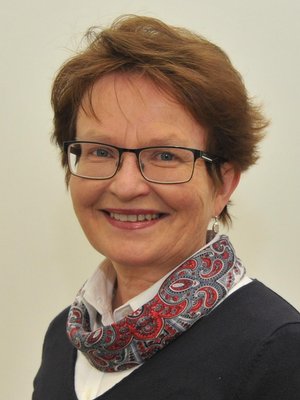Liisa Rihko-Struckmann

Dr. Techn. Liisa Rihko-Struckmann
Session: Chemical-Biological Decomposition Processes
Title: Closing the circular
cycles for polyamides?
Liisa Rihko-Struckmann, born in 1964 in Turku, Finland, studied chemical engineering at the Helsinki University of Technology (today Aalto University). After graduation 1989, she began her career in industry in the catalysis and process design at the Neste Petroleum Refinery in Porvoo, Finland. In 1990, she started academic research at the Helsinki University of Technology, and received her Ph.D in reaction engineering in 1997. After a two-year post-doc in Helsinki, she joined the process systems engineering group of Prof. Kai Sundmacher at the Max Planck Institute for Dynamics of Complex Technical Systems in Magdeburg, Germany. Her main scientific interest fields are energy conversion systems, CO2 utilisation and recycle, biomass conversion to fuels and chemicals, algal biomass valorization, biorefinery, sustainability assessment (LCA), chemical recycle of polymers and process systems engineering. Since 2009, she has lectured at the Otto-von-Guericke University Magdeburg in the field of sustainability assessment (LCA) and biomass processes. She has published >70 peer reviewed scientific papers and achieved an h-index of 22.
Closing the circular cycles for polyamides?
Most of the plastics are produced from fossil resources and after use, is the less-valued residues are incinerated for energetic recovery. The plethora of various types, synthesis paths, chemical properties, bonds and structures in plastics makes the closing of the material cycles demanding.
The presentation focuses on important technical polymers, polyamides, having the amide bond as linking unit. They make an important contribution in the polymer market globally, where PA6, PA12 and PA6,6 are the main specific types of PAs. The monomers used for the production of PA6, PA12 are caprolactam and laurolactam, respectively. PA6,6 production uses hexamethylenediamine (HMD) and adipic acid as monomer chemicals. For the PA6 polymers, the recycling is especially attractive, because the C6-monomers are produced through multi-step processes including complex oxidation and amination steps from fossil benzene or phenol. To suppress the consumption of fossil resources, existing multiple options for closing the PA cycles requires a systematic approach.
The options to close the PA production cycle are discussed in the overview. The mechanical recycle of PAs through melt extrusion is the simplest, establishing the smallest cycle, but not always applicable. Promising approach for the chemical recycle to monomer (CFM) for caprolactam-PA6 path is solvolysis: i.e. hydrolysis (acid or base catalyzed), glycolysis (using glycol), amminolysis (using NH3), alcoholysis (methanol) or treatment with ionic liquids. The chemical recycle path over C1 – chemistry (CO, CO2) obtained e.g. in gasification would require an extensive hydrogen supply and subsequently the targeted C-C bond formations to return to the C6 monomers.
The options using photosynthetic biomass to close the cycle would capture the atmospheric CO2, which is released by energetic valorization of the plastic residues. Biomass routes using sugars (d-glucose, d-fructose, and d-mannose) via the fermentation to bioethanol (EtOH) followed by reforming to CO, H2 mixture is a fully establish path. However, the smarter way to use the biomass is to sustain maximally the existing chemical structures and moieties in the biomass. The chemical dehydration pathways from monosugars or cellulosic chains through the intermediate 5-hydroxyl methyl furfural (5-HMF) followed by reduction steps to 1,6-hexanediol and caprolactone are technically challenging, but highly promising approaches. The final NH3 treatment to the monomer caprolactam is an established industrial process. Optimally, 1,6-hexanediol serves as intermediate to the PA6,6 constituents, adipic acid and HDM as well. A further, less established route would be the reductive lignin valorization to get small aromatic C6 molecules as intermediates.
Finally, the microbial fermentation provides one competing option from sugars to monomer caprolactam, but that way requires patented gene modified micro-organisms and complex separation for the monomer recovery.
The above examples show the existing options to close the circular cycle for polyamides which are addressed in the presentation. The limitations in terms of chemistry, biotechnology, catalysis, thermodynamics and the demand of resources for each reaction pathways are specific, and therefore a systemic approach is required to identify the best routes under various constraints. The network science provides the tools to model and analyze such interconnected, complex systems across the above pathways.






